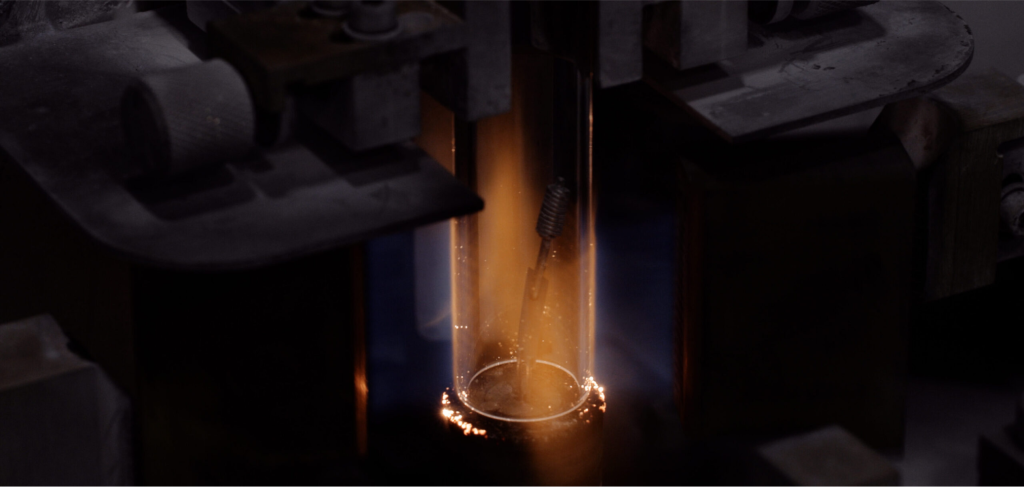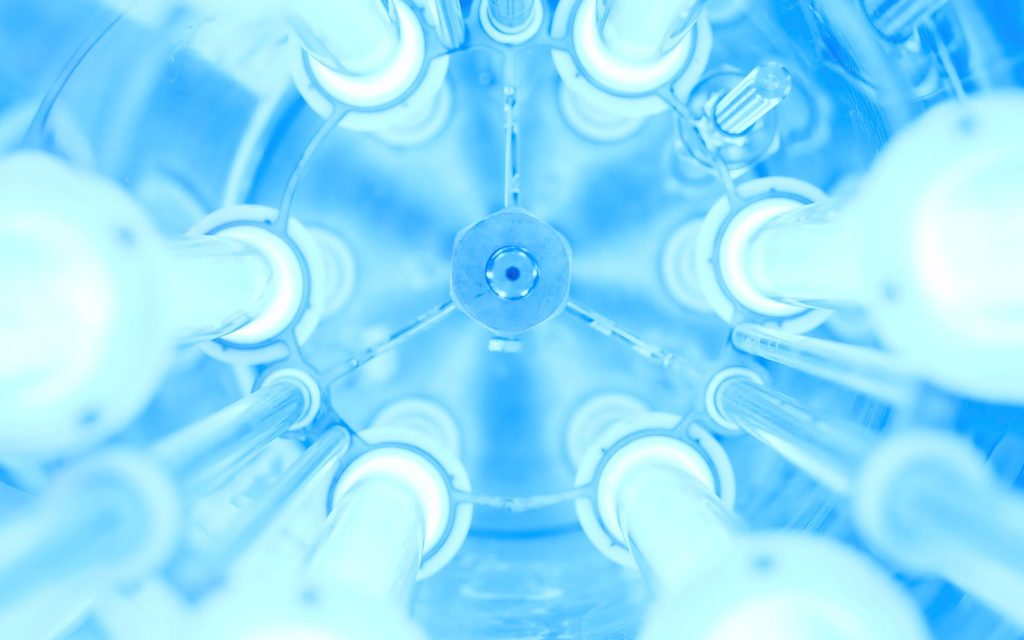Ultraviolet (UV) disinfection lamps have garnered widespread attention as a powerful tool in the fight against pathogens, particularly in the midst of global health crises such as the COVID-19 pandemic. These lamps emit short-wavelength UV radiation, predominantly in the UV-C range (around 254 nanometers), which has been proven effective in deactivating microorganisms by damaging their DNA or RNA. However, the question remains: Are UV disinfection lamps equally effective against all pathogens? In this article, we will explore the scope and limitations of UV disinfection, examining factors that influence their effectiveness and the types of pathogens they can combat.

UV disinfection is founded on the principle that certain wavelengths of UV light can damage microorganisms’ genetic material (DNA or RNA), rendering them unable to replicate or function. UV-C light is particularly effective in this regard, as it possesses sufficient energy to break the molecular bonds in these genetic materials, leading to the inactivation of the microorganisms. This process is not only rapid but also chemical-free, making it an attractive option for disinfection in various applications.
UV Intensity: The strength of the UV radiation, often expressed in microwatts per square centimeter (µW/cm²), plays a crucial role. Higher UV intensity is generally more effective in deactivating microorganisms.
Exposure Time: The duration for which microorganisms are exposed to UV radiation is a key factor. Longer exposure times allow for greater damage to genetic material and improved disinfection.
Pathogen Type: The susceptibility of different pathogens to UV disinfection varies. Some microorganisms, such as bacteria, viruses, and mold spores, are more easily deactivated than others.
Shadowed Areas: The effectiveness of UV disinfection can be reduced in areas that are not directly exposed to UV light, such as shadowed corners or surfaces hidden from the UV lamp’s line of sight.
Reflective Surfaces: UV light can be reflected off surfaces, potentially increasing its impact in certain situations. However, this reflection can also lead to uneven exposure.
Dose-Response Relationship: The dose-response relationship refers to the relationship between UV exposure and the microbial inactivation rate. This relationship is specific to each microorganism and depends on its UV sensitivity.
UV disinfection is generally effective against a wide range of pathogens, making it a valuable tool in infection control. Common types of pathogens that UV lamps can target include:
Bacteria: UV disinfection is highly effective against various bacterial strains, including common pathogens like E. coli, Staphylococcus aureus, and Salmonella.
Viruses: UV-C light can effectively inactivate many types of viruses, including those responsible for the common cold, influenza, and even more resilient viruses like SARS-CoV-2.
Mold and Fungi: UV lamps are also used for mold remediation in residential and commercial settings, effectively preventing mold growth.
Protozoa: UV disinfection can be employed for water treatment to inactivate protozoa such as Giardia and Cryptosporidium.
Parasites: UV-C radiation can also target parasites, including those responsible for waterborne diseases.
The sensitivity of microorganisms to UV disinfection varies widely. Some are more resilient than others, and the required UV dose for effective inactivation can differ significantly. This variation is crucial to consider when employing UV disinfection in different applications.
Bacterial Sensitivity: Bacteria are generally susceptible to UV disinfection, and even drug-resistant strains can be effectively deactivated with appropriate UV exposure.
Viral Sensitivity: The susceptibility of viruses varies. Enveloped viruses (with an outer lipid layer) are typically more sensitive to UV disinfection than non-enveloped viruses.
Parasite and Protozoan Sensitivity: Parasites and protozoa exhibit varying sensitivity to UV light, with some requiring higher UV doses for effective inactivation.
Fungal Sensitivity: Fungi, including mold and mildew, are generally sensitive to UV disinfection.
Spore-Forming Microorganisms: Some spore-forming microorganisms, like Clostridium difficile, can be more resistant to UV disinfection and may require higher UV doses for inactivation.
While UV disinfection is a powerful tool, it is not a universal panacea. There are limitations to its effectiveness:
Shadowed Areas: As mentioned earlier, areas not directly exposed to UV light can escape effective disinfection. Proper lamp placement and multiple lamps may be needed to address this limitation.
Environmental Conditions: High humidity or reflective surfaces can impact the effectiveness of UV disinfection.
Distance: UV intensity decreases with distance from the lamp. Therefore, the proximity of the UV lamp to the target surface or air is a critical factor.
Material Interference: Some materials may absorb or block UV-C radiation, reducing its effectiveness.
Maintenance: UV lamps require regular maintenance to ensure optimal performance. Dust or dirt on the lamp’s surface can block UV radiation.
Safety Considerations: UV disinfection can be harmful to the skin and eyes if safety precautions are not taken. Careful consideration of safety guidelines is essential.
The effectiveness of UV disinfection against emerging pathogens and their variants remains a topic of research and consideration. With the emergence of new viruses and variants, ongoing research is needed to assess the efficacy of UV-C radiation against these evolving threats.
UV disinfection lamps have proven to be an invaluable tool in the battle against a wide range of pathogens, from bacteria and viruses to fungi and parasites. Factors like UV intensity, exposure time, pathogen type, and environmental conditions can influence their effectiveness. While UV disinfection is not universally effective, it remains a powerful and chemical-free method for disinfection when employed correctly. Continuous research and adherence to safety guidelines are essential to ensure the optimal use of UV disinfection technology in various applications, contributing to the protection of public health.
Different pathogens have differing resistance to UV. Some are more susceptible than others and require different amounts of UV-C exposure for inactivation. There may even be a differing spectral response, i.e., the dose required can depend on the wavelength of UVC applied. In order to correctly size and select a UV system, it must be established which pathogen(s) are to be inactivated and what is there UV response characteristic.

What does inactivation truly mean? Does it mean every single pathogen that ever passes through the UV system will be inactivated? In reality, this is impossible; sterility is not economically achievable. Indeed, this is true regardless of what disinfection method is used, whether it is UV, chlorine, or anything else. What is possible is to reduce the pathogen count by a predictable amount. This predictable amount is called a ‘log’ reduction (as in logarithmic reduction). A 1 log reduction will reduce the pathogen of interest by 90% from the influent level. A 2-log reduction will see a 99% reduction, 3 3-log by 99.9%, and so on. Scientists have calculated the amount of UV exposure required to inactivate various pathogens by various log reductions. Examples appear in the table below.
A UV application requires a specified UV dose to achieve its required level of treatment. UV dose is the amount of UV energy per unit area on a surface. It is calculated as:
Dose = Intensity x Time (mJ/cm²)*
* The lamp power and Time of exposure to UV determine intensity. We will recommend the appropriate UV dose for each application, considering the lamp aging and fluid transmittance, the target organism, and required reduction. In the turbulent flow conditions of the UV reactor, not every particle of water or organism has the same residence time, which means that performance assessment is either a statistical calculation using Computer Fluid Dynamics (CFD) modeling or direct empirical measurement using a bioassay.
| TARGET PATHOGENS | LOG INACTIVATION | |||||||
| 0.5 | 1.0 | 1.5 | 2.0 | 2.5 | 3.0 | 3.5 | 4.0 | |
| CRYPTOSPORIDIUM | 1.6 | 2.5 | 3.9 | 5.8 | 8.5 | 12 | 15 | 22 |
| GIARDIA | 1.5 | 2.1 | 3.0 | 5.2 | 7.7 | 11 | 15 | 22 |
| VIRUS | 39 | 58 | 79 | 100 | 121 | 143 | 163 | 186 |
The amount of UV-C delivered to inactivate a pathogen has been called ‘UV exposure.’ The correct term for this exposure is ‘UV dose’ or ‘UV fluence.’ As the table above illustrates, the relationship between UV fluence and log reduction is described as a pathogen’s ‘Dose-Response Curve.’ As UV dose is the most common term for UV exposure, this will be used from here onwards.
It is important to note from the table above that the UV dose required to inactivate a given pathogen to a given log reduction is rarely linear. A common mistake is to take the UV dose required to achieve a 1-log inactivation and multiply it to calculate a higher log reduction. Although one very common pathogen, E. coli, has an almost linear dose-response curve, most are not.
For regulated applications such as drinking water, the answer is easy: you have a defined target pathogen and have to achieve a given log reduction, and a validation protocol is laid down.
In industrial applications, your choices are wider. Do you want:
These considerations will help you select a dose level, whether your UV needs validation or requires a hygienic design.
Share your treatment needs with us, and we will recommend a design philosophy. As a first approach, we suggest you consider a pathogen barrier at the beginning of your process to ensure that they do not populate your downstream equipment, and then use a hygiene maintenance philosophy to control secondary contamination after treatment and in distribution and storage. If your process is critical, we recommend a bioassayed or validated pathogen barrier as proof of performance. See our PQ systems.
Our hygienic designs will help maintain low bacterial counts when part of a hygienically designed system. i.e., a system continuously circulated at velocities > 1m / sec, is kept below 20C, has no dead legs, and is crevice-free and highly polished. Routine CIP will also be required to ensure that biofilms do not build up, but a good UV will extend the period between CIPs, reducing downtime and running costs.